2013 Honda CB500X Review
The diminutive (but not really) Adventure-Tourer
The CB500X postures to be the Adventure-Touring model in Honda’s 500cc parallel-Twin triumvirate. Sharing the majority of components with its CBR500R and CB500F siblings, the X’s distinctions are the styling of its stealthy, matte black bodywork and a one-inch increase in fork travel and seat height.
2013 Honda CB500X
| Engine | 17/20 |
| Suspension/Handling | 12/15 |
| Transmission/Clutch | 8.5/10 |
| Brakes | 7.5/10 |
| Instruments/Controls | 3.5/5 |
| Ergonomics/Comfort | 9/10 |
| Appearance/Quality | 8.5/10 |
| Desirability | 7/10 |
| Value | 10/10 |
| Overall Score | 83/100 |
2013 Honda CB500F And CBR500R Review – First Ride
For a bike of smallish displacement that should attract newer to intermediate riders, the 500X feels more substantial than its engine capacity suggests – a beneficial quality for newer to intermediate riders who are, themselves, larger in size.
The X’s 31.9-inch seat height (a boon for taller riders) combined with low, comfortably positioned footpegs and an easy reach to the handlebars lends to being a commodious seating position for riders of all sizes.
The 471cc parallel-Twin powering the CB500X, R and F produces a respectable 45 horsepower at the back wheel, but it’s the flat torque curve that’s more important. The amount of available torque at nearly every rpm provides the Honda with easy-to-manipulate engine characteristics.
When we compared the CBR500R to Kawasaki’s Ninja 300 and Ninja 650 models in our 2013 Beginner Sportbike Shootout Part 2 – Video, we were impressed the Twin’s user-friendly usability, smoothness and enough power to keep things interesting. However, we were surprised to find the 500 only barely inching away from the 300 during top-gear roll-on testing. And the 500X has the same powerplant.
In the handling department the X is competent if not excellent. The front end is neutral but willingly turns into slow, tight corners as well as faster sweepers with equal aplomb. Slowing the bike is a single 320mm wave front disc and a single twin-piston caliper up front, while at the rear a 240mm wave disc and single-piston caliper. The stopping power is far from phenomenal but adequately sufficient. ABS adds $500 to the bike’s MSRP and, in our opinion, the upgrade is worth the price for the increased safety factor.
Curiously, we experienced a harsher ride on the CB500X than we did on the CBR500R. Owning the same rear shock as the CBR500R and CB500F, the X’s suspension differs only in the 1.2 inches of increased fork travel (5.5 inches for the X vs 4.3 inches for the R and F).
But with a nine-position adjustable rear shock, we looked to better the ride by reducing some spring tension. Alas, to adjust the rear shock’s preload, a special spanner wrench is required (a screwdriver and hammer won’t work, we tried), but the wrench is not included in the bike’s toolkit. The wrench must be purchased or the bike taken to a dealership for adjustment.
2012 Honda NC700X Review – Video
Unable to do either before deadline, and considering the R and F model’s good suspension compliance, left us to assume the shock’s preload was drastically increased by another publication to suit a heavy rider. This affected the X’s ability to cope with abrupt road irregularities when ridden solo. Suspension compliance when ridden two-up was very smooth, adding to our theory.
On the bright side, when ridden aggressively on a twisty stretch within a canyon’s confines, the X proved to be an excellent performer, willingly arcing corners with more confidence and cornering clearance than its CBR counterpart. Footpegs will eventually touch down, but the pace until this happens is quicker and more thrilling than we’d expected.
Other differences between the X and its siblings is a one-inch taller seat height (31.9 inches vs 30.9 inches), a fuel tank with 0.4 more gallons of fuel (4.5 gal. vs 4.1 gal), and the highest claimed curb weight: X = 430 lbs., R = 425 lbs., F = 420 lbs.
For a person of my near-six-foot height, the manually adjustable windscreen does nothing more than raise wind flow from my collarbone to just beneath my chin. For shorter riders, the minor adjustment could prove to be the difference between comfortable or turbulent wind flow around the rider’s helmet.
When comparing the CB500X to the stylistically similar NC700X, we find the 500’s parallel-Twin to be more motorcycle-ish with a greater appetite for revs. Unlike the 700X, which has its fuel located low in its chassis under the seat and, because of this arrangement, provides a large storage space where the fuel would normally be, the 500X carries its fuel load in the traditional position.
With a very standard/neutral seating position, the ergonomics of the X beckon all-day rides, and the fuel-sipping quality of the diminutive Twin provides MPGs to grant that request with financial frugality. Seat foam isn’t as compliant as we’d like for spending consecutive hours aboard the 500X, but there are aftermarket ways to amend this minor inconvenience. There’s also an expansive steering sweep for performing tight maneuvers.
Conclusion
A versatile bike at this price makes a great motorcycle for riders of varying sizes and skill levels. The CBR500R won the shootout against the Ninja 300 and Ninja 650, but the 500X is in class of its own.
+ Highs
- Comfy, big-bike feel
- All-around competence
- Price
– Sighs
- Freeway passing power
- Suspension components
- Shock adjustment tool not included
Honda CB500X Specifications
| MSRP | $5,999/$6,499 (ABS) |
| Engine Type | Liquid-cooled parallel-Twin |
| Engine Capacity | 471 cc |
| Bore x Stroke | 67mm x 66.8mm |
| Compression | 10.7:1 |
| Fuel System | PGM-FI with 34mm throttle bodies |
| Horsepower | 45 @ 8600 rpm |
| Torque | 29.5 @ 7000 rpm |
| Transmission | 6-speed |
| Final Drive | O-ring sealed chain |
| Frame | Tubular-steel semi-double cradle |
| Front Suspension | 41mm fork; 5.5 inches travel |
| Rear Suspension | Pro-Link single shock with nine-position spring preload adjustability; 4.7 inches travel |
| Front Brakes | Twin-piston caliper with single 320mm wave disc |
| Rear Brakes | Single caliper 240mm wave disc |
| Front Tire | 120/70-17 |
| Rear Tire | 160/60-17 |
| Seat Height | 31.9 inches |
| Curb Weight | 430 lbs |
| Wheelbase | 55.9 inches |
| Fuel Capacity | 4.5 gal |
| Electronics | Optional ABS |
| Colors | Matte Black Metallic |
A former Motorcycle.com staffer who has gone on to greener pastures, Tom Roderick still can't get the motorcycle bug out of his system. And honestly, we still miss having him around. Tom is now a regular freelance writer and tester for Motorcycle.com when his schedule allows, and his experience, riding ability, writing talent, and quick wit are still a joy to have – even if we don't get to experience it as much as we used to.
More by Tom Roderick



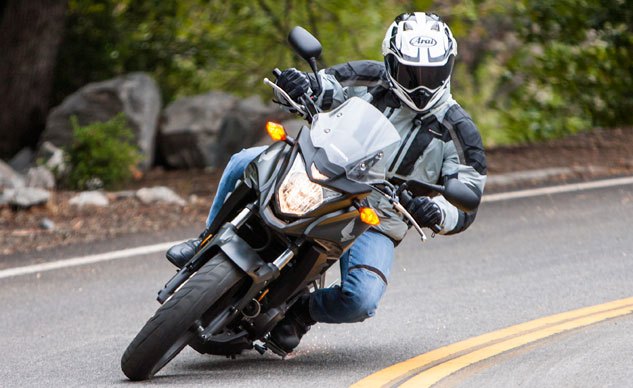

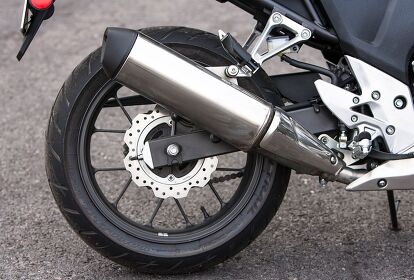






























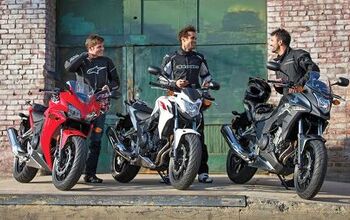

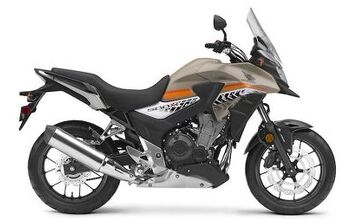

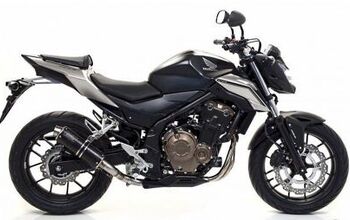











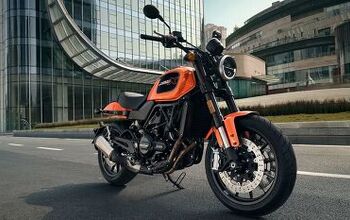
Comments
Join the conversation
I love reading about all these practical, fun little stinkers. Then I get on The Morrigan ('10 Z1000) and forget all about them.
47 HP has trouble passing on the Freeway?? What sort of measure of passing power are we attempting to measure up to here?